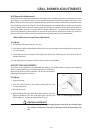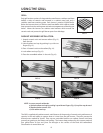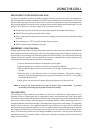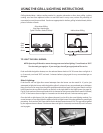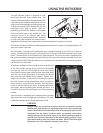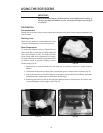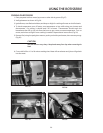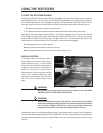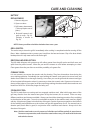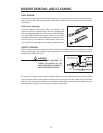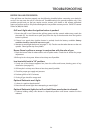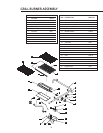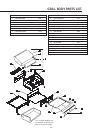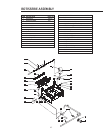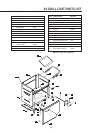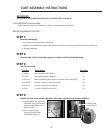Special offers from our partners!

Find Replacement BBQ Parts for 20,308 Models. Repair your BBQ today.
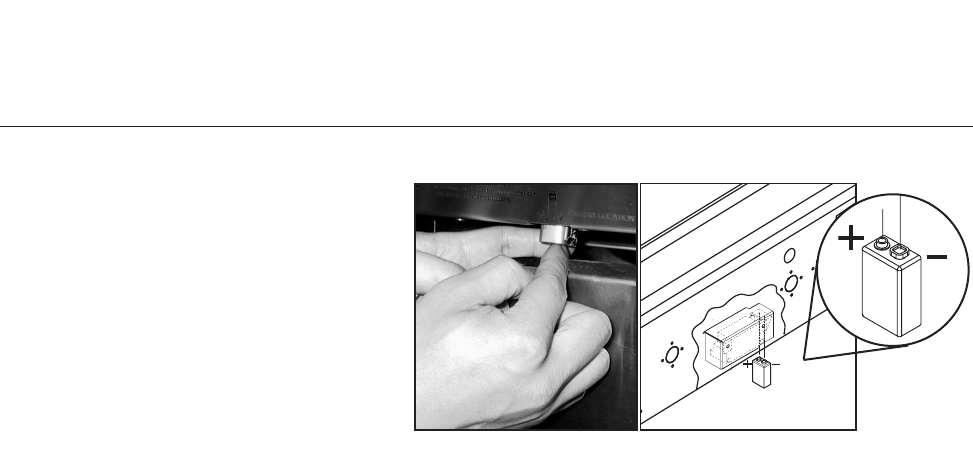
22
CARE AND CLEANING
BATTERY
REPLACEMENT:
1. Remove drip pan.
2. Open cart door.
3. Pull battery downwards
(This may require use of
pliers.)
4. Re-install upward and
push to snap - Fig. 32.
(Polarity is shown in
Fig. 33).
NOTE: Battery condition should be checked at least once a year.
GRILL GRATES:
The easiest way to clean the grill is immediately after cooking is completed and after turning off the
flame. Wear a barbeque mitt to protect your hand from the heat and steam. Dip a fine brass bristle
barbeque brush in tap water and scrub the hot grill.
DRIP PAN AND GREASE TRAY:
The full width drip pan with grease tray will collect grease from the grill section and boil overs and
spills from the power burners. Allow the pan and its contents to cool before attempting to clean.
Clean grease from the pan often to avoid the possibility of a grease fire.
CERAMIC RODS:
It is not necessary to remove the ceramic rods for cleaning. They burn themselves clean during the
next cooking operation. Periodically the trays holding the ceramic rods need to be turned over, and
shaken free of debris for a thorough cleaning. How often you use the grill and the amount and type
of food cooked will determine when it is necessary to clean the ceramic rods. If grease can be seen on
the top of the tubes or if you get a lot of flare-up during cooking,the tubes need to be turned over and
heated on“HIGH” for 30 minutes;longer for heavy soil.
STAINLESS STEEL:
The Grill is made from non-rusting and non-magnetic stainless steel. After initial usage, areas of the
grill may discolor from the intense heat given off by the burners, this is normal. There are many
different stainless steel cleaners available. Always use the mildest cleaning procedure first,scrubbing
in the direction of the grain. To touch up noticeable scratches in the stainless steel, sand very lightly
with dry 100 grit emery paper in the direction of the grain. Specks of grease can gather on the surfaces
of the stainless steel and bake on to the surface and give the appearance of rust. For removal use an
abrasive pad (Scotch Brite is good) in conjunction with a stainless steel cleaner. Always rub in the
direction of the grain.
Note: Stainless steel tends to rust in presence of chlorides and sulfides specially in coastal areas.
To ensure rust prevention, wash all stainless steel surfaces every 3-4 weeks with fresh water
and stainless cleaner.
FIG.33
FIG.32



